8 Grass Like Plant With White Flowers
A lush green lawn is the pride and joy of many homeowners. However, the occasional appearance of Grass Like Plant With White Flowers can be frustrating. These little blooms are often an indication that weeds have invaded your turf.
Weeds with white flowers can be tricky to identify and control. Their life cycles, growth habits, and resilience allow them to persist and spread in lawns. To reclaim a healthy lawn, an understanding of these common white-flowering lawn weeds is essential.
This comprehensive guide provides homeowners with the knowledge to identify, manage, and control the most prevalent weeds found in lawns that produce white blooms. Learn to recognize these weeds by characteristics beyond the flowers, including leaf shapes, stem types, and growth patterns. Discover integrated strategies to promote thick, vigorous grass that resists and outcompetes weeds. Arm yourself with the tools to eradicate invaders and cultivate the lawn of your dreams.
Common Lawn Weeds
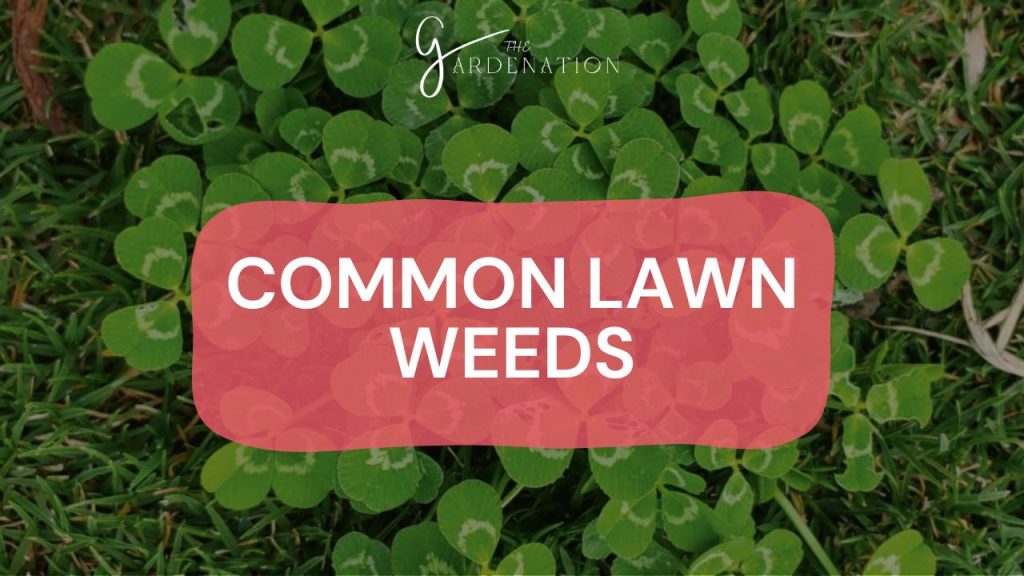
Many lawn invaders produce white flowering blooms. The following provides detailed descriptions of the most prevalent grass intruders.
For more information about Gardening you can visit: Companion Plants For Oakleaf Hydrangeas
White Clover (Trifolium repens)
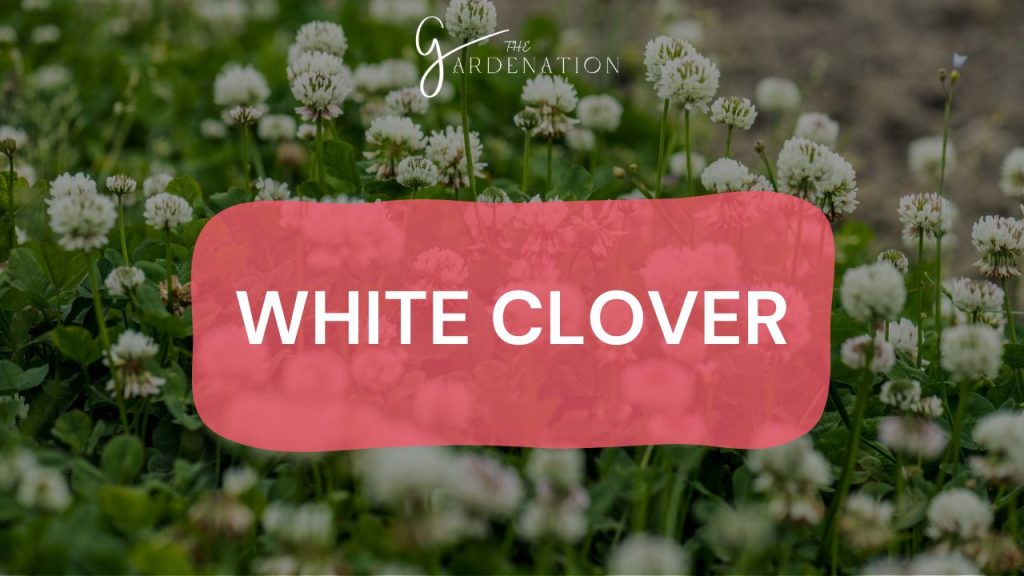
1. Life Cycle: Perennial
White clover persists year after year once established. It spreads via stolons and rhizomes beneath the soil and produces seed.
2. Bloom Time: Spring to Summer
Look for the distinct white globular flower heads dotting lawns from spring through summer. Bees flock to the nectar-rich blooms.
3. Indicators of Lawn Health: Presence in Thinning Grass
White clover invades thin, stressed lawns in need of nitrogen and proper mowing heights. Its ability to fix nitrogen facilitates growth in poor soil. Healthy, thick turf resists invasion.
Hairy Bittercress (Cardamine hirsuta)
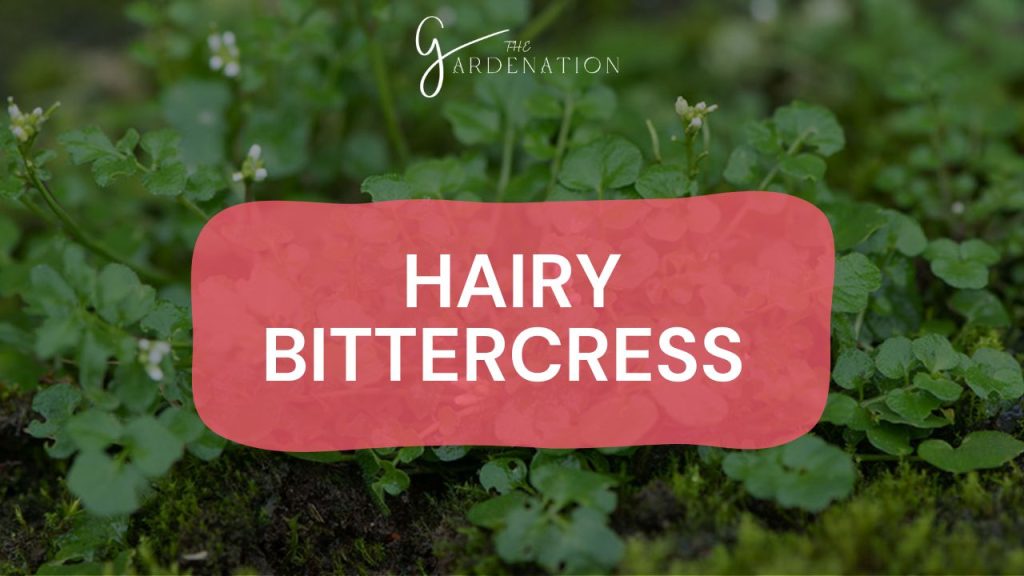
1. Life Cycle: Annual or Biennial
This opportunistic weed acts as a short-lived annual or less commonly as a biennial plant, dying after flowering.
2. Bloom Time: Spring
Small white blooms appear in springtime. They produce long skinny seed pods shortly after flowering.
3. Soil Indicators: Damp Conditions and Over-Irrigation
Hairy bittercress flourishes in moist soils. Reduce irrigation and improve drainage to deter growth. Avoid overwatering.
English Daisy (Bellis perennis)
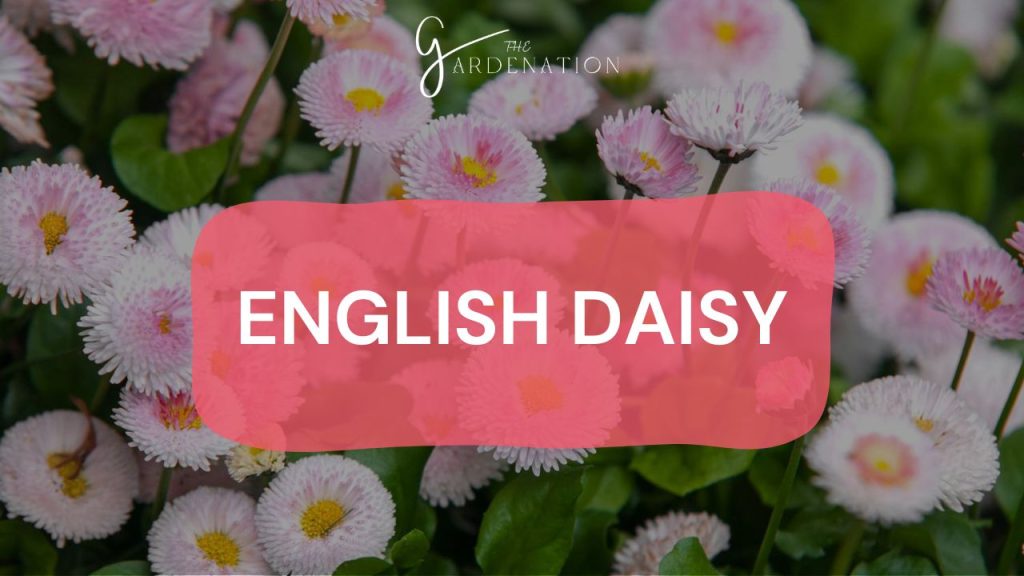
1. Life Cycle: Perennial
English daisies are cool season perennials that spread via rhizomes and abundant seed production. They grow low to the ground with prostrate foliage.
2. Bloom Time: Spring to Summer
Cheery white and yellow flowers bloom from early spring into summer. Deadhead spent blooms to prevent self-seeding.
3. Growth Habit: Underground Rhizomes and Patchy Growth
English daisies slowly invade lawns via underground rhizomes, forming circular patches that expand outward year after year.
Common Chickweed (Stellaria media)
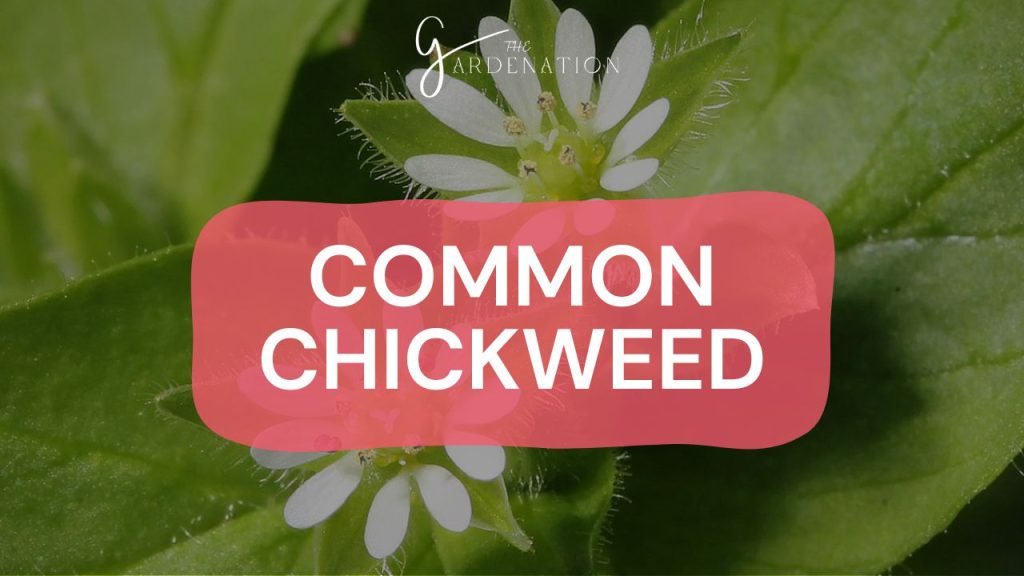
1. Life Cycle: Annual
This cool season annual germinates in fall and forms dense mats of vegetation that die out with summer heat.
2. Bloom Time: Spring to Fall
Tiny white star-shaped flowers appear intermittently from early spring into fall. Flowers are small with five deeply lobed petals.
3. Seed Persistence: Longevity and Germination
Large quantities of seed germinate readily in cool weather. Preventing seed production and monitoring soil temperature reduces growth.
Mouse Ear Chickweed (Cerastium fontanum)
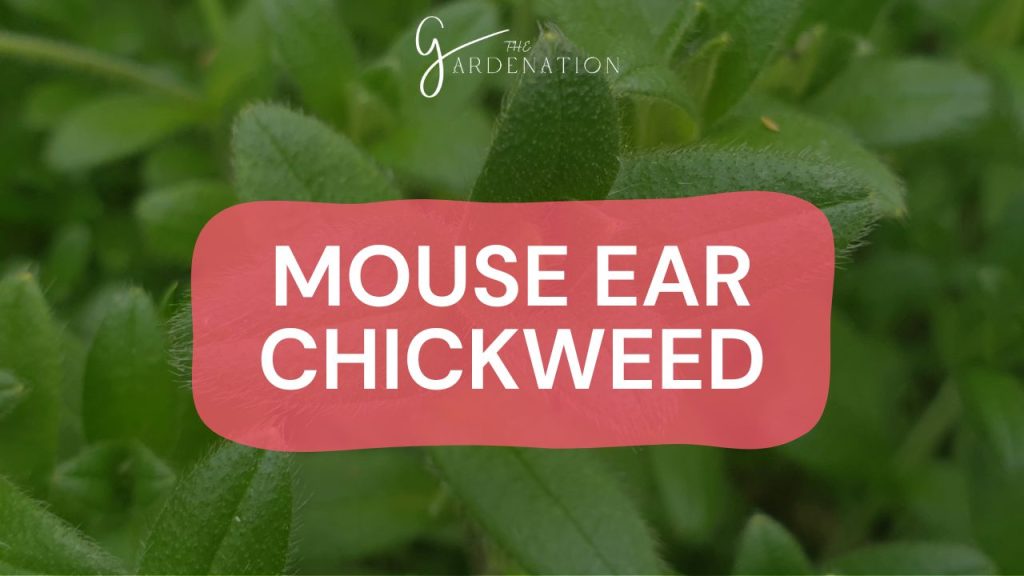
1. Life Cycle: Perennial
Mouse ear chickweed forms extensive patches and persists year-round other than extremely hot, dry periods that cause temporary dieback.
2. Bloom Time: Spring to Fall
Tiny white five-petaled flowers bloom off and on almost year-round in mild climates, taking short breaks during heat.
3. Growth Habit: Fuzzy Leaves and Spreading Roots
Dense mats of fuzzy gray-green foliage spread via shallow roots. It tolerates close mowing. Leaves resemble mouse ears.
Yarrow (Achillea millefolium)
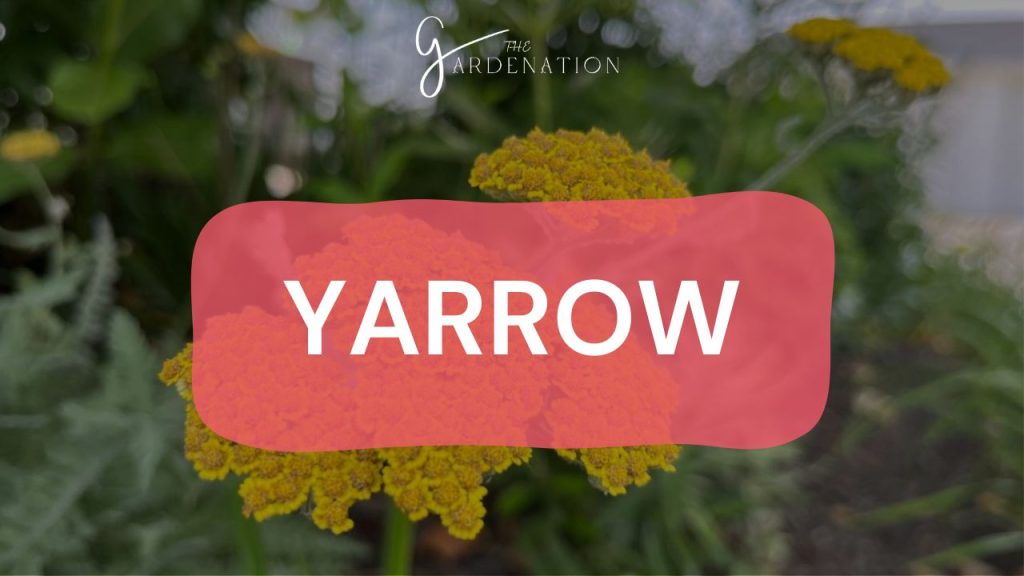
1. Life Cycle: Perennial
Yarrow is a perennial weed that forms clumping fern-like foliage and spreads aggressively via rhizomatous roots.
2. Bloom Time: Summer
Flat-topped clusters of tiny white flowers bloom in summer. The stems and leaves are aromatic when crushed.
3. Invasive Potential: Encroachment from Adjacent Beds
Yarrow easily escapes ornamental beds via spreading roots. It invades turf at edges and bare patches. It tolerates mowing.
Wild Violet (Viola spp.)
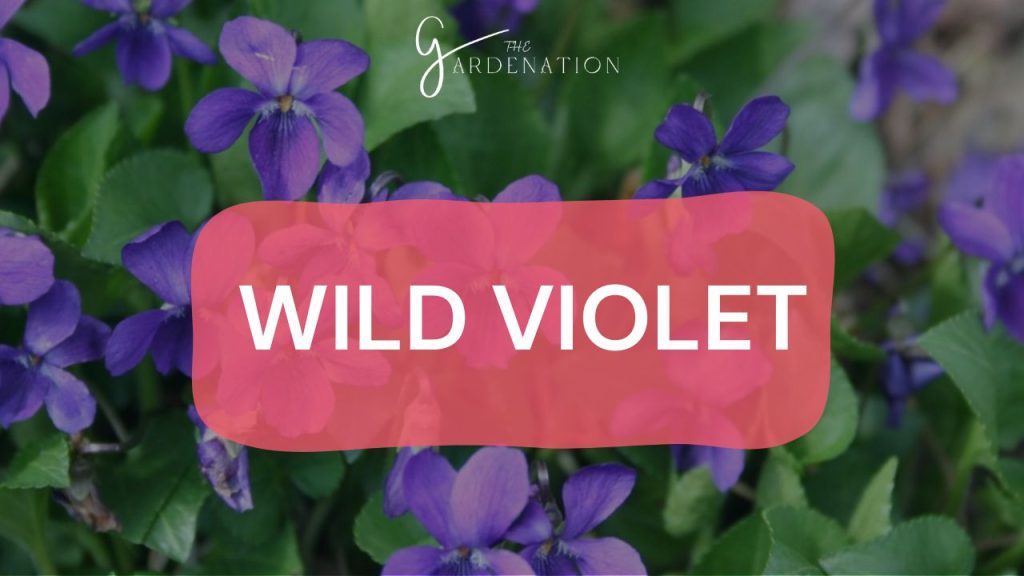
1. Life Cycle: Perennial
This perennial weed spreads via seeds and creeping aboveground stolons that root at nodes. It forms large colonies.
2. Bloom Time: Spring
Delicate purple and white violet blooms appear in spring. The heart-shaped leaves have rounded teeth.
3. Habitat Preference: Moist, Shady Areas
Violets thrive in damp, shaded sites under trees or near lawn edges. Improve drainage and light penetration to deter growth.
Pearlwort (Sagina procumbens)
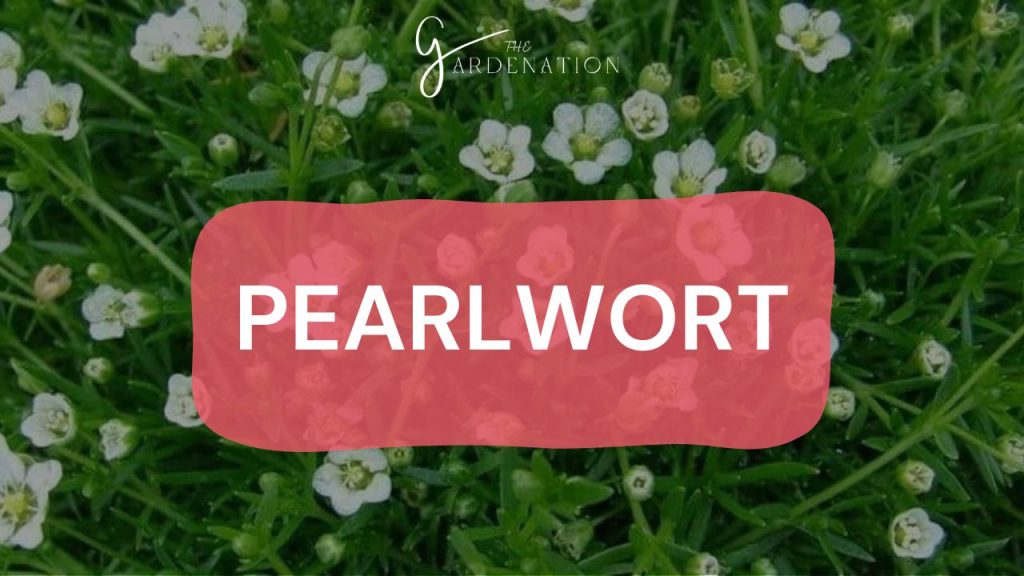
1. Life Cycle: Annual
Pearlwort acts as a winter annual, germinating in fall and dying after spring flowering and seed production.
2. Bloom Time: Spring to Summer
Tiny (1/8 inch) white flowers dot the foliage from spring to summer. Smooth, slender leaves form dense low mats.
3. Soil Preference: Loose, Moist Conditions
Pearlwort flourishes in damp loose soil. Avoid overwatering and improve drainage to reduce growth. It tolerates close mowing.
Tips for Identifying Weeds with White Flowers
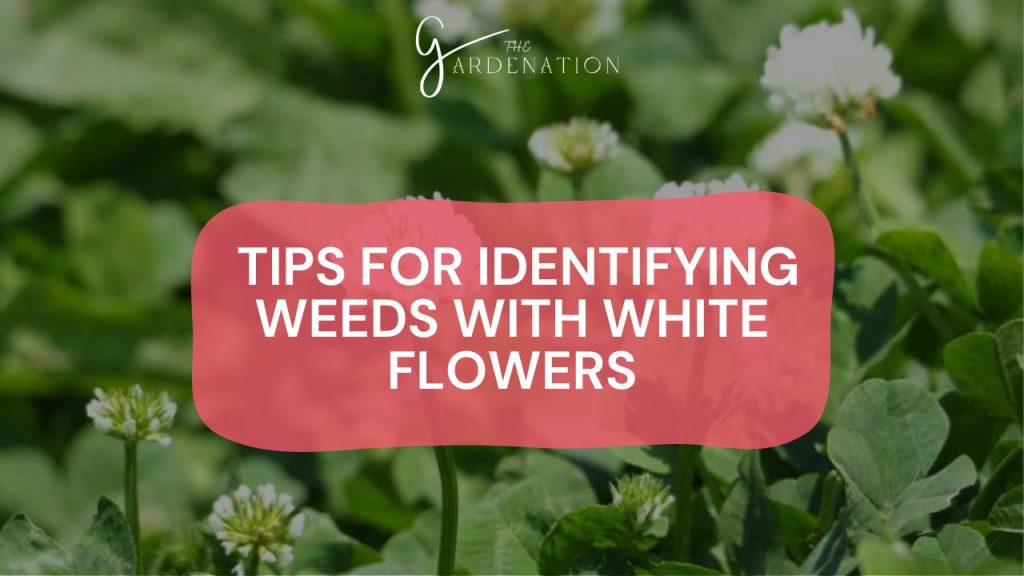
Properly identifying lawn weeds ensures you can find the most effective control methods. Several key factors beyond the presence of white flowers aid in weed recognition.
Importance of Weed Identification
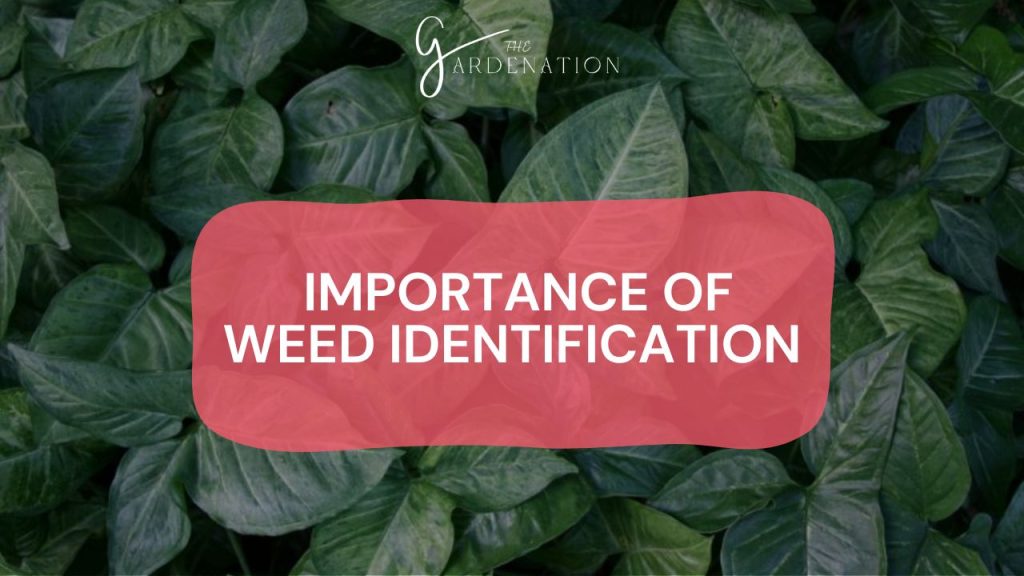
Correctly identifying lawn weeds is crucial for choosing suitable treatment methods that target the specific plant. Weed life cycles, growth rates, and reproductive methods all impact the control tactics. Misidentification can lead to wasted time, effort, and resources.
Weed Types in Lawns
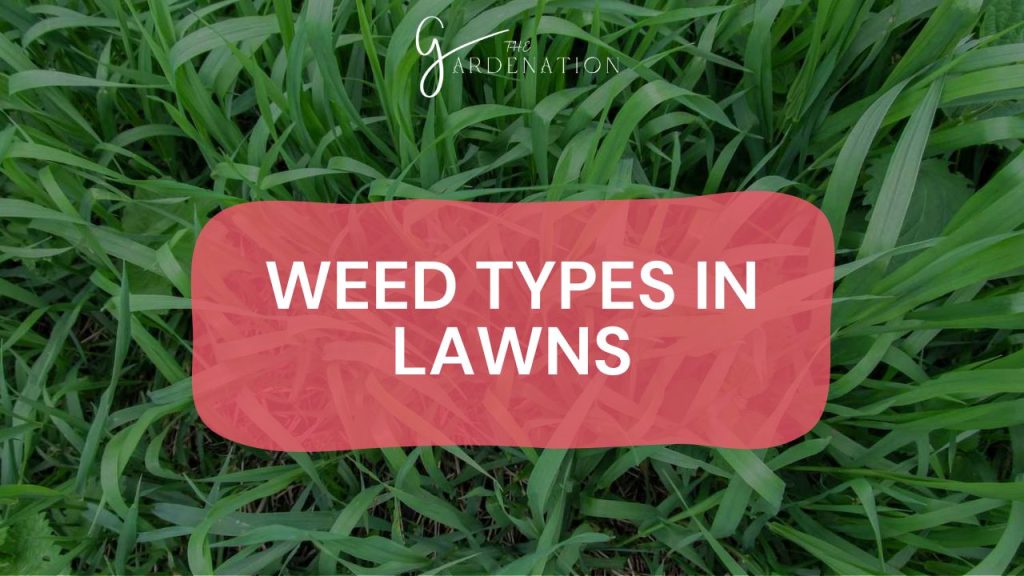
The three main categories of lawn weeds include broadleaf, grassy, and sedge weeds. Each requires specialized control approaches. Broadleaf weeds have wide leaves with netted veins. Grassy weeds resemble lawn grass. Sedge weeds have triangular stems and grass-like leaves.
Recognizing Broadleaf Weeds
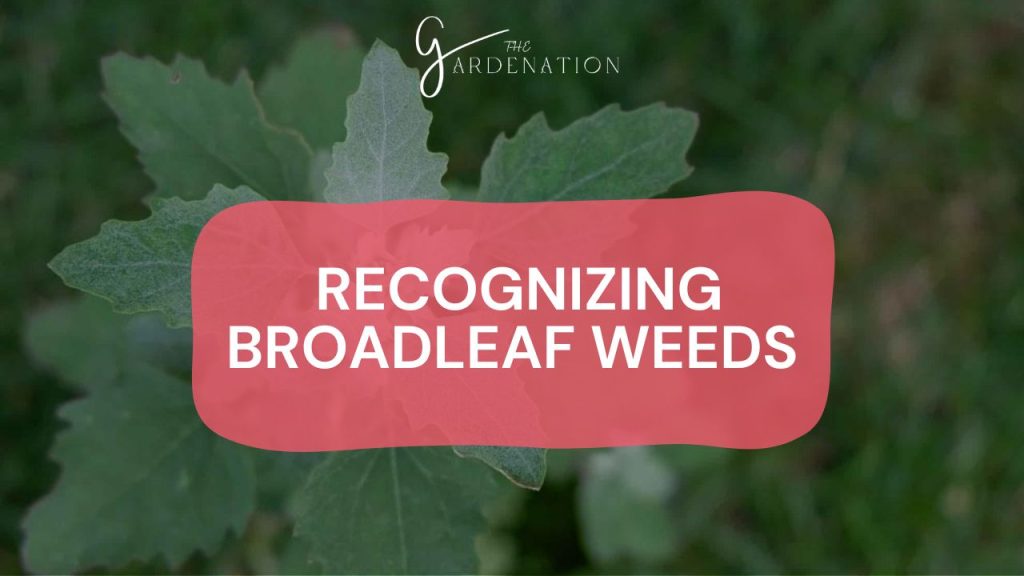
Many common lawn weeds with white flowers are broadleaf plants. Unique leaf shapes, textures, and vein patterns differentiate species. Leaves may be rounded, lobed, or finely dissected. They may feel smooth or hairy.
1. Characteristics: Vein Patterns, Branching Stems
Net-veined leaves and branching taproots or stems identify broadleaf weeds. Examine leaves closely to aid identification. Dissecting leaves reveals internal structures.
2. Selective Herbicides for Broadleaf Weeds
Selective broadleaf herbicides target broadleaf weeds but do not harm grasses. Correct ID of broadleaf weeds ensures proper herbicide selection.
Identifying Grass and Sedge Weeds
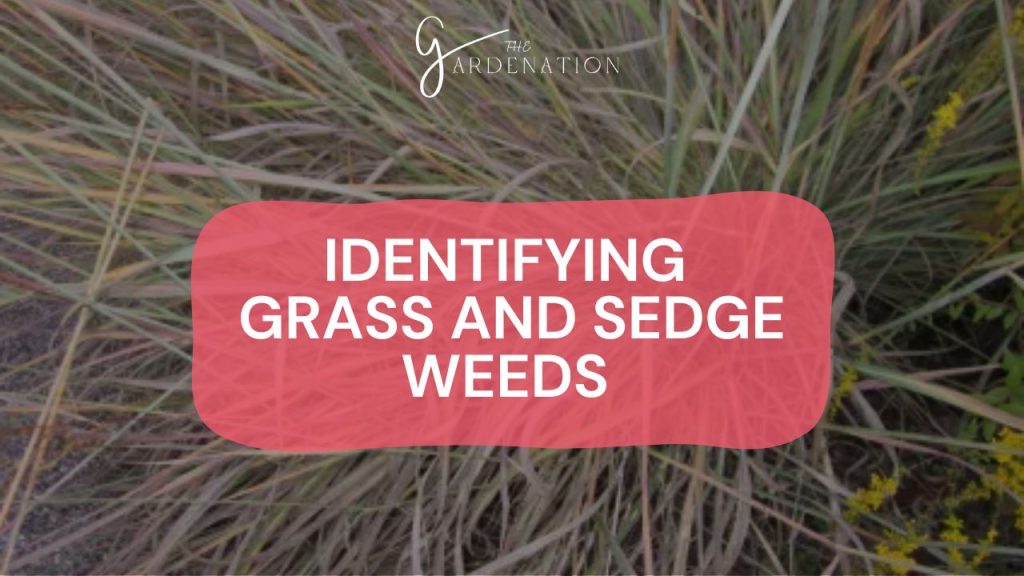
Grassy and sedge weeds integrate seamlessly into lawns. They resemble turf grass in size and leaf shape, making ID difficult. Their life cycles also mimic grass growth.
1. Blending with Turf Grass
Without flowers, grassy and sedge weeds disappear into the lawn. Compare suspicious patches to surrounding grass. Differences in color, texture, or growth habit may emerge.
2. Specialized Herbicides for Grass and Sedge
Control options target the unique growth habits of grassy and sedge weeds. Accurate ID is key to choose suitable specialized herbicides.
Life Cycles and Bloom Times
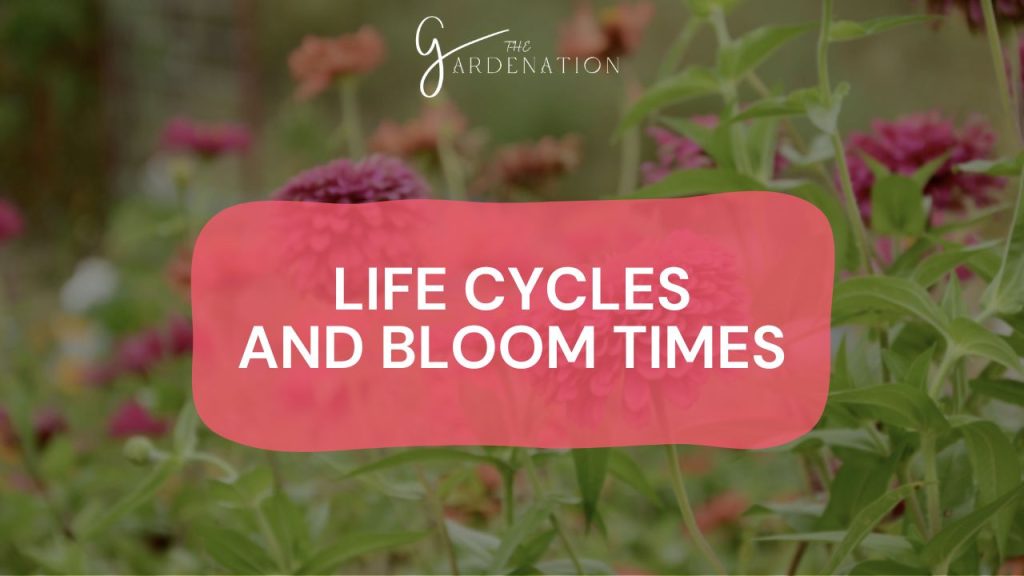
The life span, reproduction methods, and flowering seasons of weeds provide more clues to their identification and tools for management.
Annual, Biennial, and Perennial Weeds

Weeds are categorized by life cycles of one, two, or many years. Annuals die after seed production while perennials regrow for many seasons.
Impact of Life Cycles

Matching control methods to weed life cycles is crucial. Annuals propagate by seed, so preventing seed production and germination controls growth. Repeated removal is required for perennials.
Significance of Bloom Time
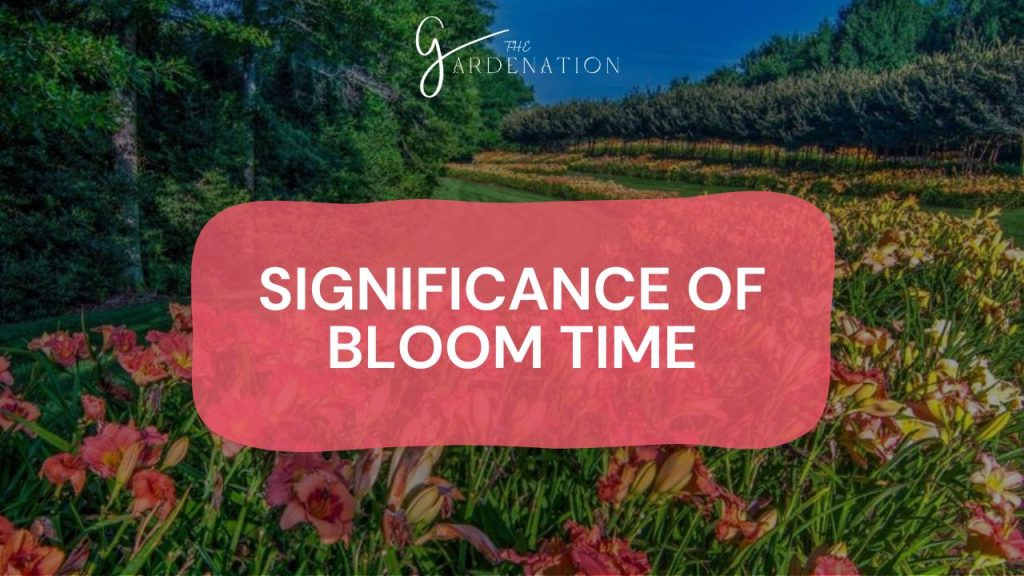
Flowering indicates a weed’s life cycle stage. Annuals bloom once before dying. Biennials flower in their second season. Perennials bloom repeatedly on an seasonal cycle.
Preventing Seed Production
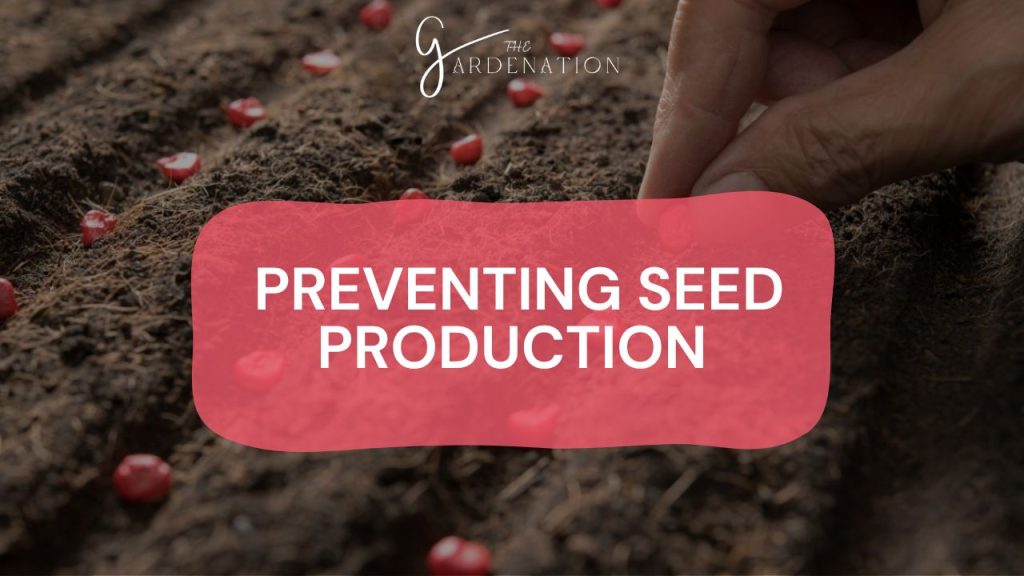
Allowing weeds to go to seed dramatically escalates populations the following year. Timely removal before flowering and seed set provides control. For annuals, this prevents future growth.
FAQs About 8 Grass Like Plant With White Flowers
Why is My Turf Grass Flowering?
Blooms may actually be grassy weeds rather than turf grass flowers. Compare suspicious patches to surrounding vegetation. If flowers occur throughout the lawn, broadleaf weeds like white clover are more likely than flowering turf grasses.
What Are the Little White Flowers on My Lawn?
Based on growth habit and prevalence, white clover is the most common lawn weed displaying white blooms. Rather than controlling white clover, some gardeners tolerate or encourage its growth for its soil benefits and lawn alternative traits.
Conclusion
Weeds with small white flowers commonly invade turf grasses. Armed with the ability to recognize key features and growth habits of prevalent lawn weeds, you can now identify and target control measures to eliminate invaders. Integrate proper mowing, irrigation, soil amendments, and cultivation with selective herbicides to promote lush, vigorous grass that resists and outcompetes weeds. Through proactive management, you can rid your lawn of pesky white-flowering blooms and maintain the carpet of green you desire.
Citations:
- https://www.thespruce.com/weeds-with-white-flowers-7963585
- https://ag.umass.edu/turf/fact-sheets/guide-to-weed-life-cycles
- https://ipm.ucanr.edu/agriculture/floriculture-and-ornamental-nurseries/general-methods-of-weed-management/
- https://weedid.cals.vt.edu
- https://www.lawnscience.co.uk/easy-guide-to-common-weeds-white-flower/


One Comment